Welcome to Moda Fabrics!
String me along...
String me along...
Is it the array of gorgeous colors? The different textures? The thought of all the lovely things you could stitch?
Or is it just because it's pretty?
I love thread - the different types and sizes of spools, the different weights and textures of threads, and all those amazing luscious colors. I buy lots of it, some to use and some just because I couldn't resist it's loveliness. I have a half-dozen spools I bought in Paris several years ago, and I have the Sajou thread I bought at Purl Soho in New York City just because I loved that the spools were called "cocoons".
I use taupe, white and gray. Cones.
But it still makes me happy to have pretty thread. I'm pretty sure I'm not alone, most of us can't resist buying extra spools to have some extra on hand, and maybe even because we love the pretty pictures of thread storage ideas we see on Pinterest and Google Images.
Here's the problem - unless you're using these threads regularly, this isn't how thread should be stored.
"Using regularly" - that's the key phrase. If you do a lot of decorative stitching and/or machine quilting, having a large variety of thread colors, weights and finishes is what you use. Keeping it on hand, easily visible and accessed is a good idea. But if you don't use it all the time, if you sew in a bright, sunny room that gets really warm in the afternoon and you're next to a river, ocean or lake... maybe not.
Okay, that was kind of stacking the deck in my favor.
The issue is simple - thread does "go bad". It becomes brittle, weakened, stressed and a dozen other things that will cause it to deteriorate. While all thread eventually weakens and deteriorates eventually - think decades and centuries - the reason we should think about it now is that we're using it to sew. Now. When it breaks or knots, that's frustrating. If that's happening because of deterioration, it's something we can avoid.
And no, it shouldn't be stored in the freezer because it slowly removes the moisture. No one is quite sure where that idea came about but it's possible it came from the textile museum practice of putting quilts in the freezer. And why do they do that? The International Quilt Study Center puts quilts in the freezer for 24 hours to kill any critters that might be inhabiting them.
I have to confess that I learned some of this when I took Singer Sewing classes back in the 1970s, and I picked up more along the way from classes, books and personal experience. Good machine-quilters have been a great source of information because they use thread in what can only be called "extreme conditions" - their needles are traveling at a very high rate of speed. And they use a lot of thread.
So what I know is this - the principal enemies of thread (and fabric) are light, variations in temperature & humidity and dust. Direct sunlight is the most obvious but storing thread close to a lamp or other light will eventually create the same problems - fading and drying. To maintain it's optimum strength, threads need to retain a degree of moisture, a balance. Anything that increases or decreases that will cause it to deteriorate - the more extreme the exposure, the faster the deterioration. Whew.
The other issue is dust. I saw it described once as being like microscopic little knives "cutting through the fibers". Well. Okay. But really, it's more than that. If you've ever read anything about dust, you don't want to know the rest. Basically, dust is bad for all sorts of reasons. It's not only harmful to you, it's incredibly harmful to textiles because of what dust actually comprises. Again, you don't really want to know. So storing your thread in the open where it will be exposed to regular, ordinary household dust should be avoided.
A plastic storage box designed for thread turns out to be the best kind of storage - so long as you don't then store the box in direct sunlight or next to a heat lamp. Artbin makes one called the Super Satchel and Slimline calls theirs a Spool Storage box.
Any kind of box or container will also work so long as it protects the thread from dust, minimizes exposure to light, humidity and temperature variations, and keeps the spools separated and the threads from tangling is recommended.
My favorite is a flat storage box - called a Translucent Project Case - that I get at The Container Store. I use them for storing thread, perle cotton, projects when traveling and other "stuff". Yes, I have a few. (I even got my brother - aka Golden Child - hooked on them. Hi Mark! Yes, he checks in by reading this blog every few weeks.)
(Do you think I could find the box with the thread? Nope. So this will have to do.)
For more information about threads and storage, I found two terrific articles while double-checking some of my information.
- Thread Essentials from Threads Magazine by Taunton Press
- Miss Sews-It-All - When Good Thread Goes Bad
And that's it about thread for today. I'll be back tomorrow to chat about something else.
(And yes, while you're reading this, I'm in Utah with the ladies from American Quilting in Orem.)
Happy Thursday!

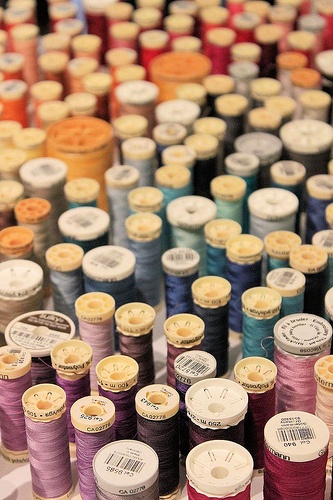
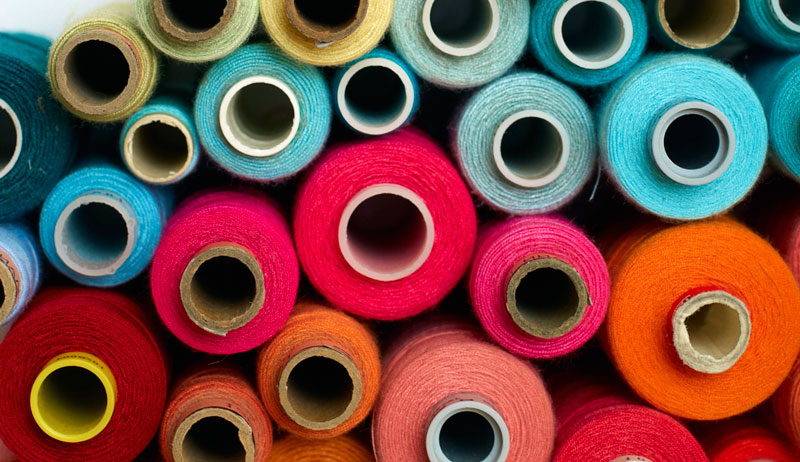
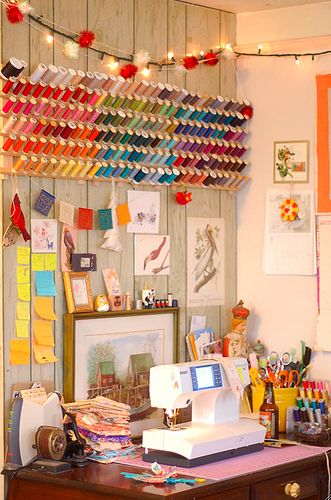
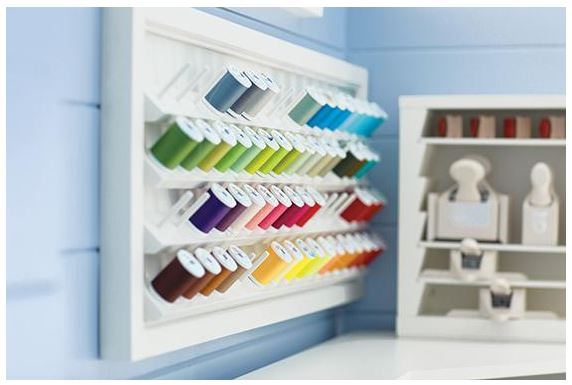

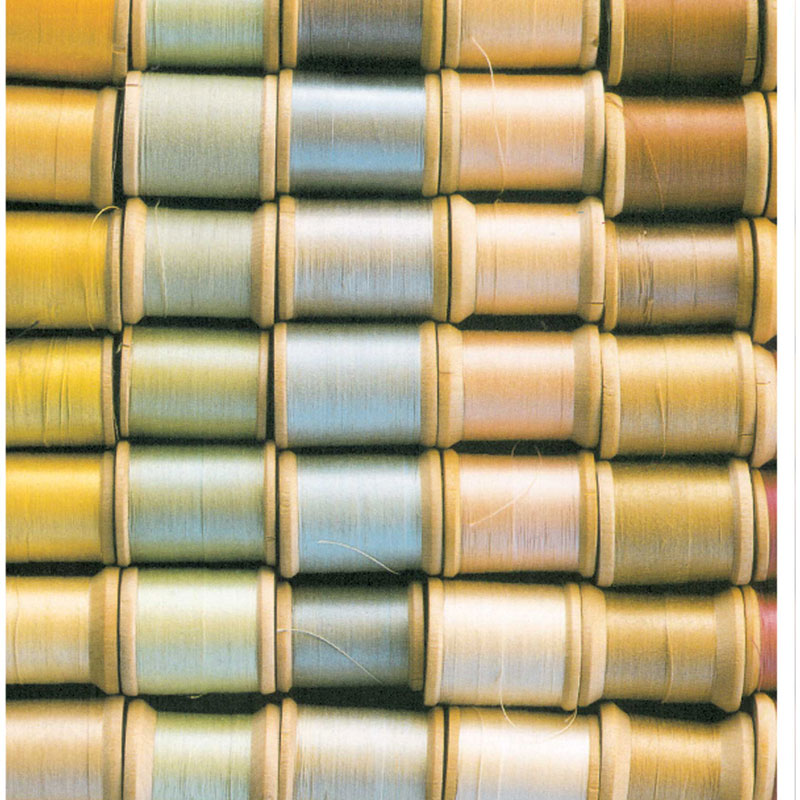
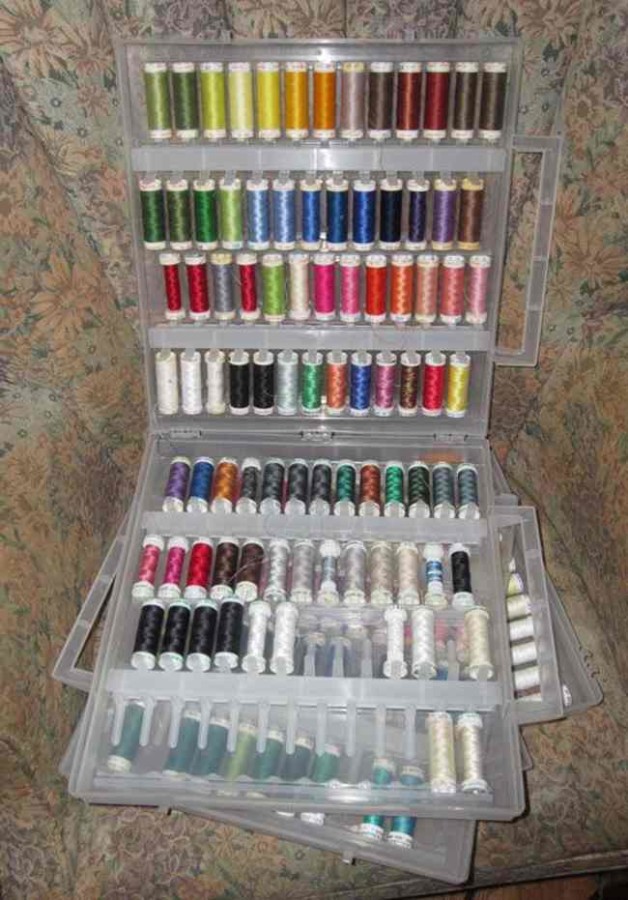
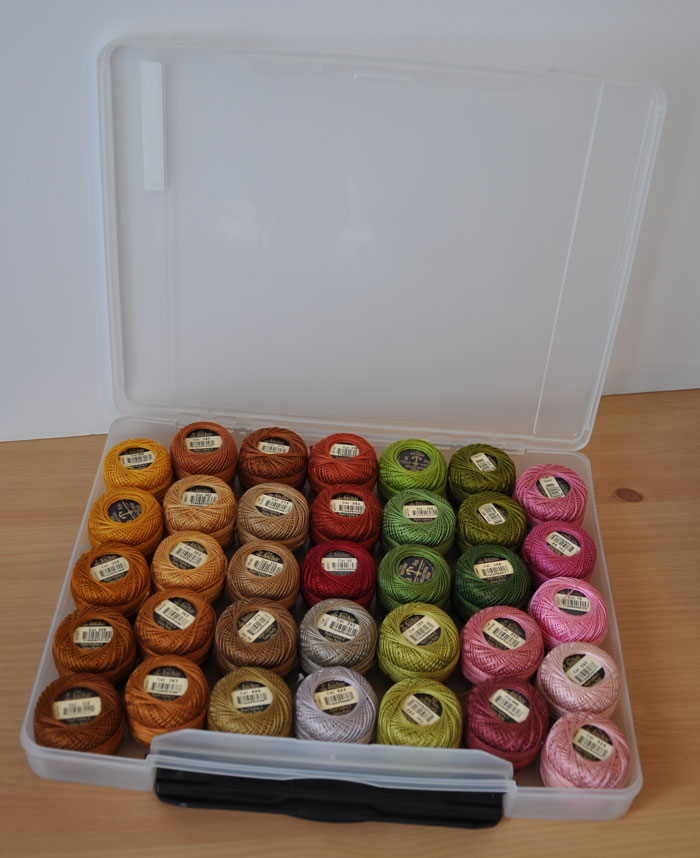
Comments